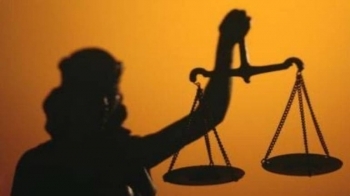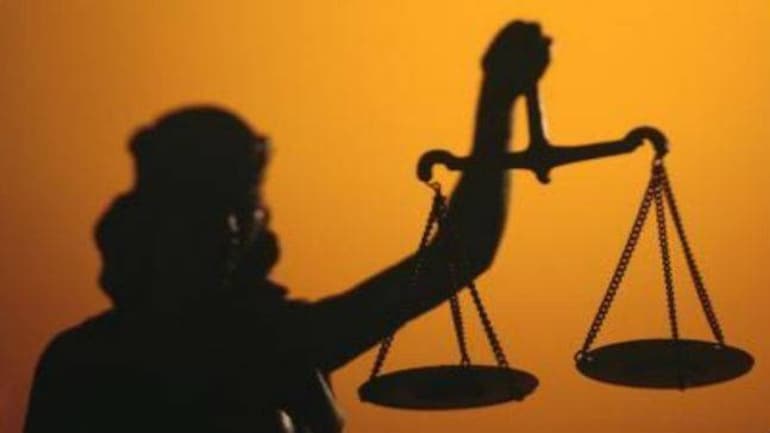
.png) John Dayal
John Dayal

The law and justice apparatus in India ought to be praying for a piece of cloth on their collective face to hide their blushes as the world watches in cold horror how constitutional guarantees have been turned on their head to victimise twice over the most vulnerable segment in the country now – the girl child in a Muslim family.
The interim order of the Karnataka High Court, on a petition which challenged a government directive banning the use of the Muslim women’s head dress ‘Hijab” in educational institutions, has seen a cascading violence. Girls have been “disrobed” of items of clothing identified with their religion. Muslim girls have been chased by louts, and agitations against them have been launched by young men, and some women, sporting suddenly procured saffron scarves.
Police and school and college male and female staff have in effect supported the move against Muslim females by turning away students, and some Muslim teachers, who wanted to attend classes while wearing their hijabs to cover their head, as they had done for many years in educational institutions.
The matter is being heard before a three-judge Bench headed by the Chief Justice. The Bench includes a Muslim woman judge, but the diversity displayed has paled in front of the calamitous continuance of the interim decision which in effect judicially prolongs the action of the government which had been contested as going against constitutional guarantees of freedom of religion and the right to education.
The majoritarian right wing anti-Muslim agitation has spilled out of Udupi district in coastal Karnataka to cover other towns in the state and is now erupting in neighbouring Andhra Pradesh. The Sangh Parivar is actively supporting this new-found movement against hijab. The “Godi media” – a name for newspapers and TV channels which support Prime minister Narender Modi -- and social media are active as force multipliers. The movement threatens to impact the election in communally sensitive Uttar Pradesh where only two rounds of polling have taken place.
This also marks the incremental escalation of communal polarisation in Karnataka which is still in the process of enacting the Bill it moved last month against religious conversions which targeted Christians and Muslims, precipitating a massive secular protest. It also had an international fallout with many governments and human rights groups calling out the Indian government for eroding religious freedom.
It remains a moot question if the Chief Justice could, in the interests of law and order, modify the interim order to continue the situation which existed before the government issued its ham-handed directive. It is also a moot point if the Supreme Court could have acted on several efforts to draw its attention to the aggravating communal confrontation in Karnataka.
The core issue of the government’s power to ban the hijab in schools and colleges is sub-judice. The eyes of India’s Muslims, other minorities, human rights movements and others are on the proceedings in the High Court which are being relayed over You Tube, in one of the smaller miracles of virtual proceedings forced by the Covid pandemic.
The world too is watching. International development agencies and human rights organisations have placed India towards the very bottom of their annual lists, where it just manages to raise itself above the banana republics, some theocracies, and several failed states.
It is in that shamefully compromising position because of the treatment meted out particularly in recent years to such groups as religious minorities, the working class, farmers, apart from Dalits and Adivasis who have traditionally been the target of majoritarian excesses which were aided and abetted by various agencies of the government.
The farmers’ agitation was lifted recently after a year of a powerful ‘dharna’ at the very doorsteps of the national capital of New Delhi. The farmers went home but not before making sure that the Prime Minister ate humble pie and withdrew the three agricultural laws he had foisted on the Parliament. The laws, farmers had feared, would make them hostage to big business, and specially to what is called crony capitalism, the less than a dozen top corporations in the country which are also very supportive of the current government.
During their agitation, more than 700 famers died. This figure includes those who passed away because of cardiac arrest, as also farmers who committed suicide. It also included the several protesters in the terai region of Uttar Pradesh who were crushed under the wheels of a car reportedly driven by the politician-son of a junior minister in Mr Modi’s government. The young politician was arrested after a national outrage. He was released last week on bail. Mr. Modi refused to take any action against his junior minister.
People, and occasionally some newspapers, point out that the government is not very active against top businessmen who have cheated national banks and public institutions of trillions of rupees. They conducted their loot while allegedly being patronised by the government and the politicians in control.
The data and revelations are startling. A total of 72 Indians charged with frauds or financial irregularities are currently abroad. As many as 33 persons accused in bank fraud cases registered by the Central Bureau of Investigation are abroad, many in the United Kingdom. They include Former Member of the Rajya Sabha and once a top liquor and aviation giant Vijay Mallya, billionaire cricket league boss Lalit Modi, diamond merchant Nirav Modi, Mehul Choksi, Nitin J. Sandesara, and Dipti Sandesara. Only two of the crooks have been brought back in the past nearly six years.
The world saw the plight of India during the first two waves of Covid. The first year, 2020, saw the highest number of suicides among the unemployed in the recent past, with the toll crossing the 3,000-mark for the first time, the National Crime Records Bureau said in its annual data. The actual number of suicide deaths because of unemployment was 3,548 people. The total national figure for suicide in 2020 was 1.53 lakh, up from 1.39 lakh in 2019.
Of the dead, 10,677 people were engaged in the farm sector. Most of these deaths were among those whose primary work was as farm labour.
The discussion on Covid deaths remains contested with estimates ranging from a total of 22 lakh to 40 lakh dead in the first two waves. Government does not accept any non-official or international data on covid deaths in India.
There is, however, little doubt on how minorities, in particular Muslims, Dalits and Adivasis, have suffered at the hands of the police and criminal justice system in the country. Official data show that of the 2.82 lakh undertrial inmates, over 55% are Muslims, Dalits and Tribals. Collectively, these three communities form a population of only 39% with a share of 14.2%, 16.6% and 8.6% of population respectively according to the 2011 census, the last conducted.
The Commonwealth Human Rights Institute in New Delhi, which surveyed the data on prisons, says from 2019 to 2021 the average increase in prison populations in 17 states is recorded at 23 percent, whereas in previous years it was 2 to 4 percent. Prisons are over-crowded and trials in courts very slow. Prison occupancy on an average increased from 115 percent to 133 percent.
The proportion of undertrials increased from 69 percent to 77 percent, with 2020 seeing nine lakh more arrests than 2019, and this despite lockdowns and extensive restrictions on movement of the public.
Anti-Muslim rhetoric surged following the outbreak of Covid-19 in March 2020, after Delhi government said they found many Covid-19 positive cases among Muslims who had attended a Tabliqi Jamat mass religious congregation in Delhi. BJP leaders called it a Talibani “Corona Terrorism” and the media headlined it as “Corona Jihad.” Numerous physical attacks on Muslims, including volunteers distributing relief material, followed.
Dalits are treated equally bad. According to 2019 government data, crimes against Dalits increased by 7 percent. One example: In August that year, 40 Dalit families in Odisha were socially boycotted when a 15-year-old girl plucked flowers from the backyard of a dominant caste family. In July, a Dalit man was stripped and beaten along with his family members in Karnataka for allegedly touching the motorcycle of a dominant caste man.
As for Adivasis and the land on which they have lived forever, United Nations experts raised concerns over the government’s proposed revision of the environmental impact assessment process that exempts several large industries and projects from public consultation and allows post-facto clearance for projects that began without obtaining the required permissions. Diluting the provisions for public consultation and allowing post-facto clearances undermine the rights of tribal communities, activists have cautioned.
Any discussion on the life of the people on the margins cannot be complete without documenting the targets of the most heinous law in India, called the Unlawful Activities Prevent Act, or UAPA.
The National Crime Records Bureau says 6,900 UAPA cases were reported between 2014 and 2020. Jesuit priest Fr Stan Swamy was one of the 16 persons arrested in one of these cases. He died as a prisoner. Lawyers of the Society are trying hard in the Bombay High Court to get his name cleared of the smudge of criminality.
The state has few excuses. But the one it frequently trots out is the slow trial process through the multiple layers of court system. In turn, the judiciary bemoans the many vacancies and the government’s delay in appointing new judges. A study by PRS found over four-and-a-half crore cases pending in courts. PRS calculates that if no new cases are filed in any court, it would take the Supreme Court 1.3 years to clear its backlog, with High Courts taking up to three years or more. Alas, fresh cases are lodged every year, and are increasing.
There certainly is a shortage of judges to decide cases. As on September 1, 2021, PRS notes, in the High Courts, 42% of the sanctioned posts for judges were vacant (465 out of 1,098). Five High Courts (Telangana, Patna, Rajasthan, Odisha, and Delhi) had more than 50% vacancies. In subordinate courts, 21% posts out of the sanctioned strength of judges were vacant (5,146 out of 24,018).
It becomes difficult to say, as minorities and the poor are wont to chant, that “We believe in the judicial system”. Justice delayed is justice denied – for the victim.